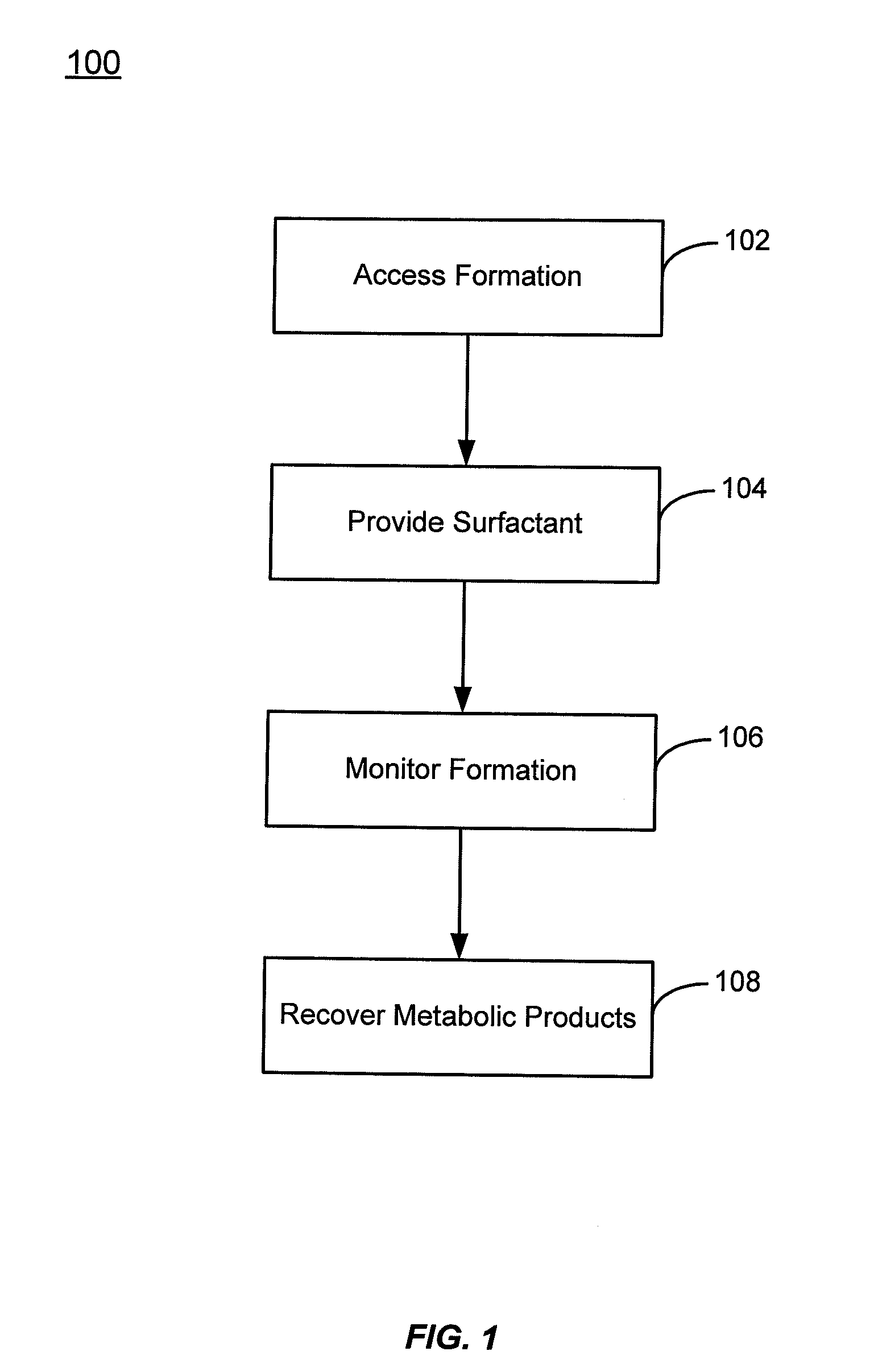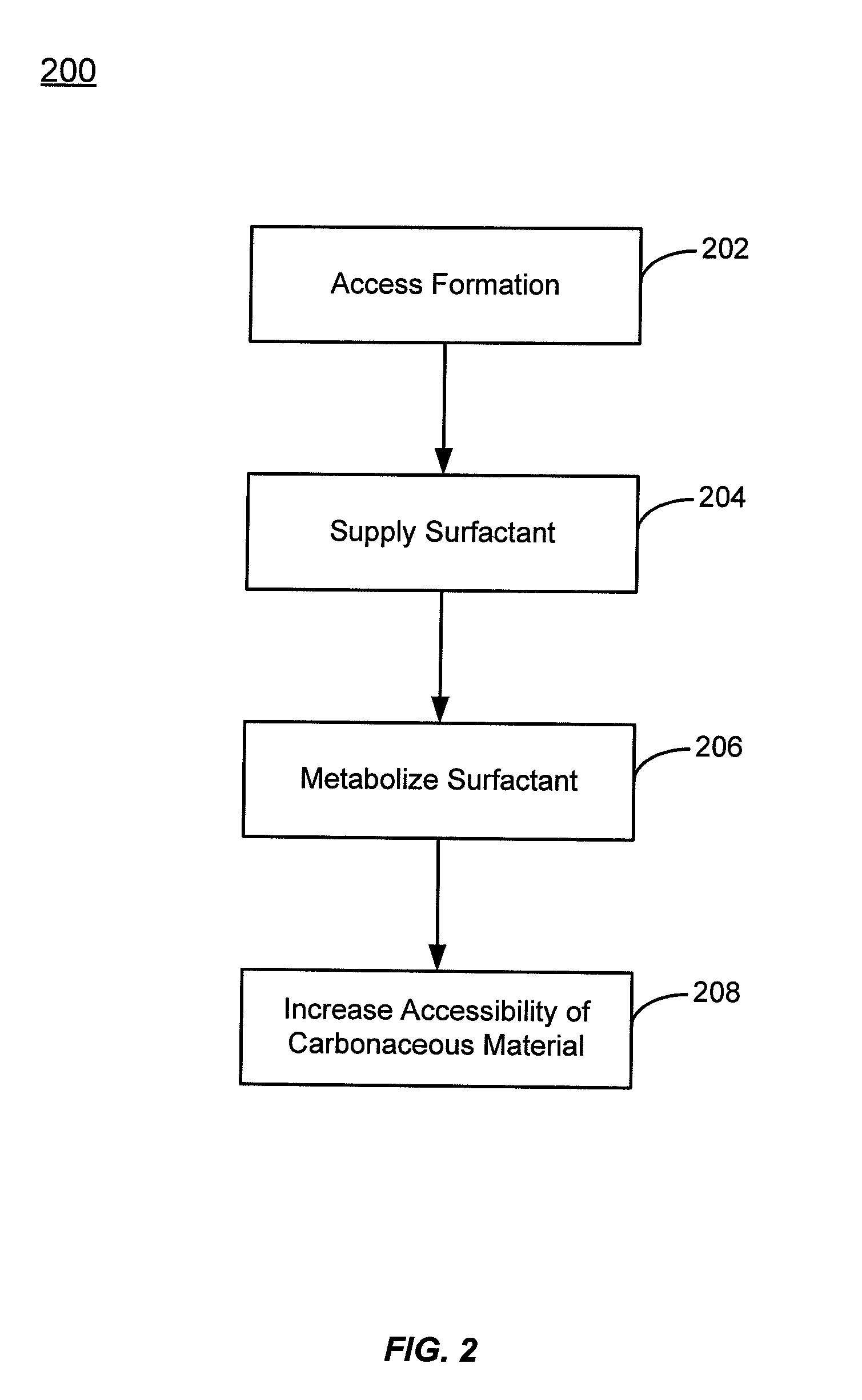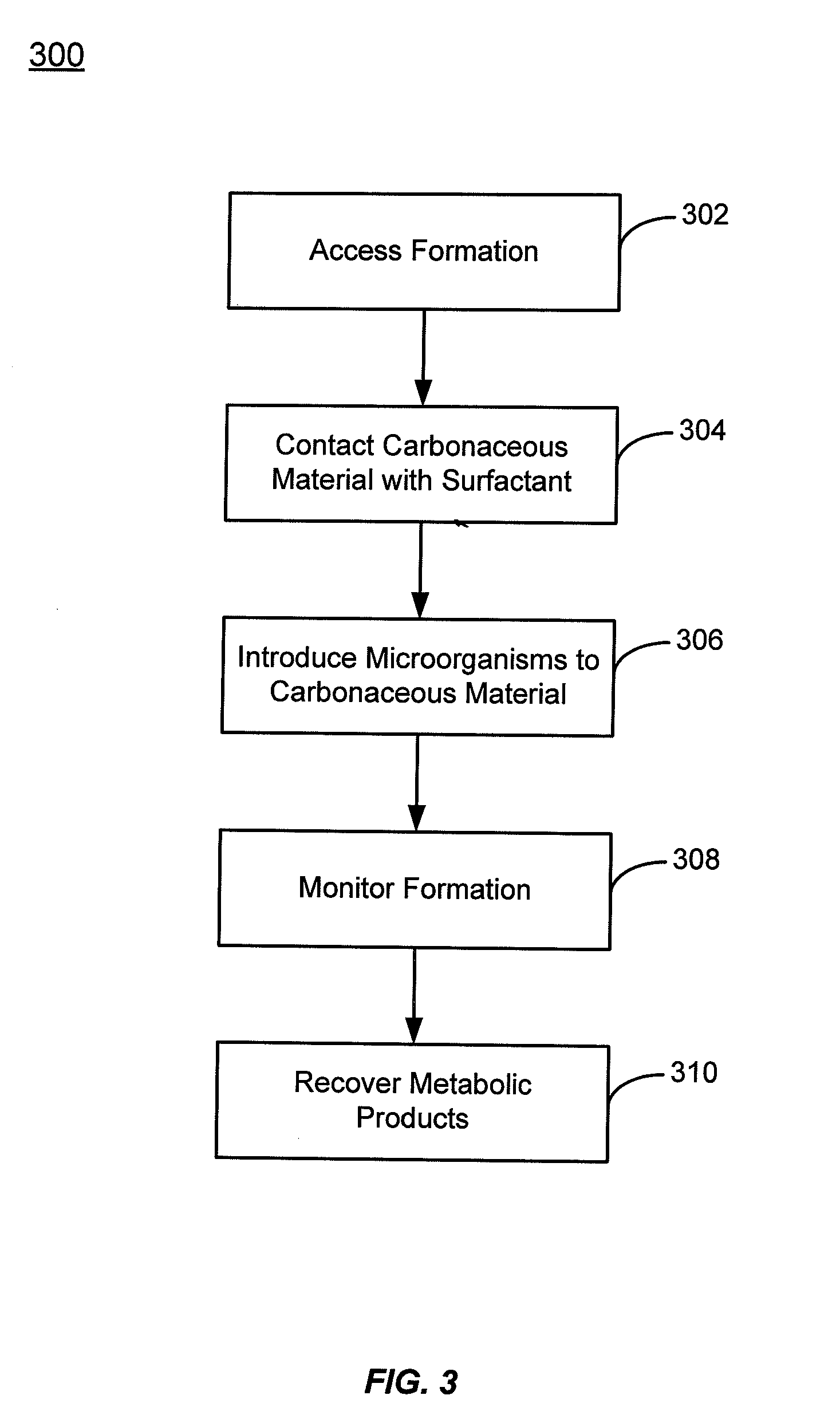Surfactant amendments for the stimulation of biogenic gas generation in deposits of carbonaceous materials
a carbonaceous material and biogenic gas technology, applied in the direction of fluid removal, fermentation, well accessories, etc., can solve the problems of slow or stop the biogenic conversion of solid and semi-solid carbonaceous materials, huge quantities, slow or stop the biogenic conversion of these materials into natural gas, etc., to increase the biogenic production of natural gas and increase the accessibility of carbonaceous materials
- Summary
- Abstract
- Description
- Claims
- Application Information
AI Technical Summary
Benefits of technology
Problems solved by technology
Method used
Image
Examples
Embodiment Construction
[0019]Methods are described for increasing the rate of biogenically produced compounds such as methane by providing surfactant compositions to geologic formations containing carbonaceous material. Surfactants are compounds that are active at the interface between two phases, such as the interface between coal or shale and water. Surfactants tend to accumulate at this interface and can modify its surface tension to allow easier distribution of materials between the phases. This property of surfactants can serve to increase the accessibility of more easily metabolizable components of the carbonaceous material by a microorganism consortium. The increased accessibility may come from transporting these components (typically non-polar hydrocarbons) to polar, aqueous fluid media where the microorganisms reside. It may also come from increasing the penetration and spread of microorganism carrying fluids through the carbonaceous material.
[0020]Select surfactants can also act as a food source...
PUM
 Login to View More
Login to View More Abstract
Description
Claims
Application Information
 Login to View More
Login to View More - R&D
- Intellectual Property
- Life Sciences
- Materials
- Tech Scout
- Unparalleled Data Quality
- Higher Quality Content
- 60% Fewer Hallucinations
Browse by: Latest US Patents, China's latest patents, Technical Efficacy Thesaurus, Application Domain, Technology Topic, Popular Technical Reports.
© 2025 PatSnap. All rights reserved.Legal|Privacy policy|Modern Slavery Act Transparency Statement|Sitemap|About US| Contact US: help@patsnap.com



